Japan, also known as the Land of the Rising Sun, has many different types of Buddhism which sets its temples and shrines distinctly apart from the rest of the world. Most notably, Shinto and Zen Buddhism draw influence from Indian and Chinese types of Buddhism, emphasising enlightenment and a close connection to nature.
Many of the Buddhist temples in Japan are built with the intention to offer a sense of tranquillity to visitors, complete with splendid gardens and bonsai trees. Meanwhile, most Japanese shrines are Shinto shrines, where locals believe the spirits of Japanese deities dwell. With that, let’s dive into the many wondrous and captivating temples and shrines in Japan’s various regions.
Tokyo
1. Sensō-ji Temple (Asakusa Kannon Temple)
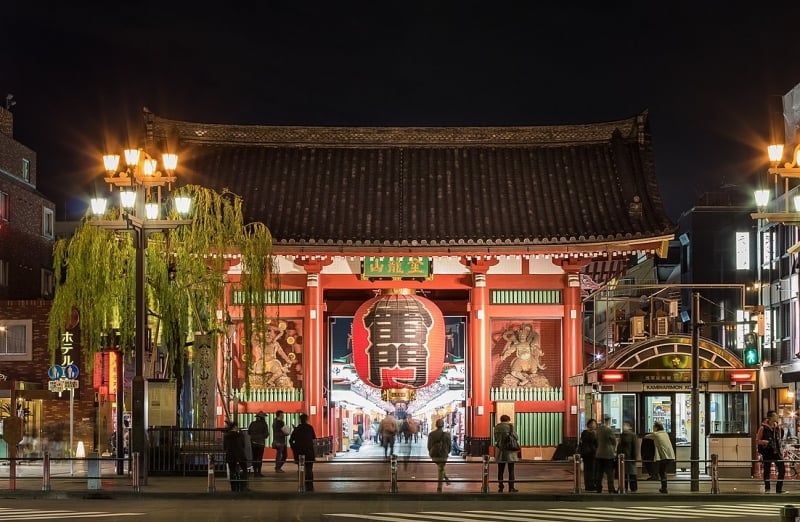
Image credit: Kakidai
Located in northern Tokyo, Sensō-ji Temple is Japan’s oldest and one of the most historically significant. It is dedicated to the Goddess of Mercy. According to legend, two brothers once fished a statue of the goddess out of the Sumida River. Despite returning the statue to the water, it kept coming back to them. Eventually, they decided to build a temple in her honour.
At the entrance to the temple is Kaminarimon (Thunder Gate) which displays a massive paper lantern dramatically painted in vivid red-and-black tones to suggest thunderclouds and lightning and is also flanked by statues of the Shinto gods Fūjin (Wind God) and Raijin (Thunder God) on the right and left respectively.
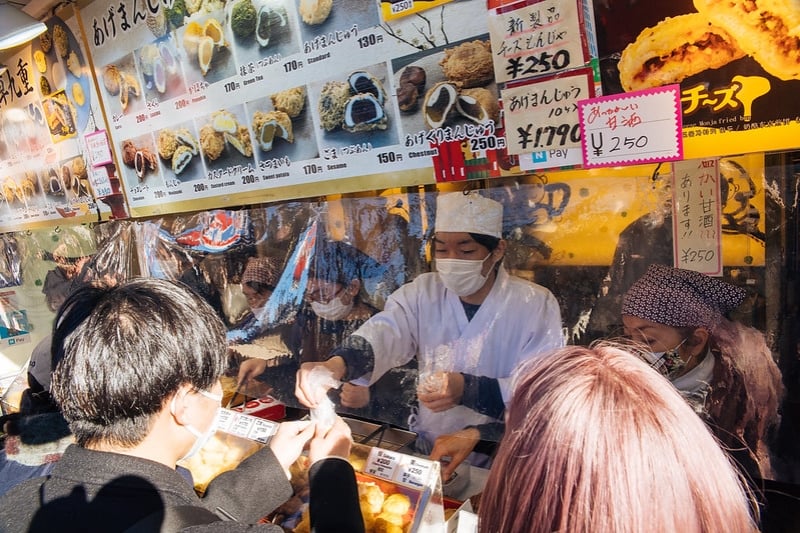
Image credit: Dick Thomas Johnson
Besides being a very popular and colourful temple for locals to pray to, it is commonly associated with Nakamise Dori, a shopping street leading up the to temple. Expect rows of street food selling sweet treats like ningyoyaki (sponge cakes with red bean paste) and melon pan bread.
Vendors also sell trinkets and traditional Japanese items such as elegant folding fans, hair accessories and handmade Japanese umbrellas. It is a great temple to visit if you are someone who enjoys the hustle and bustle of crowded places, as well as lively street atmospheres.
Admission: Free
2. Meiji Jingū (Meiji Shrine)
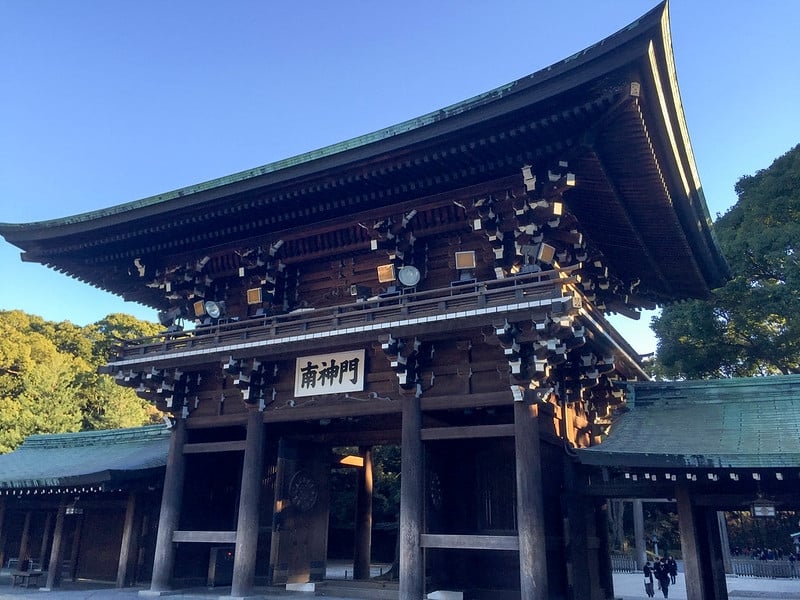
Image credit: Kent Wang
Nestled in a forested area in western Tokyo, the Meiji Shrine allows for a scenic stroll along ambient footpaths. It is classified as an Imperial Shrine in Japan and commemorates Emperor Meiji, who transformed feudal Japan into a more modern and westernised Japan.
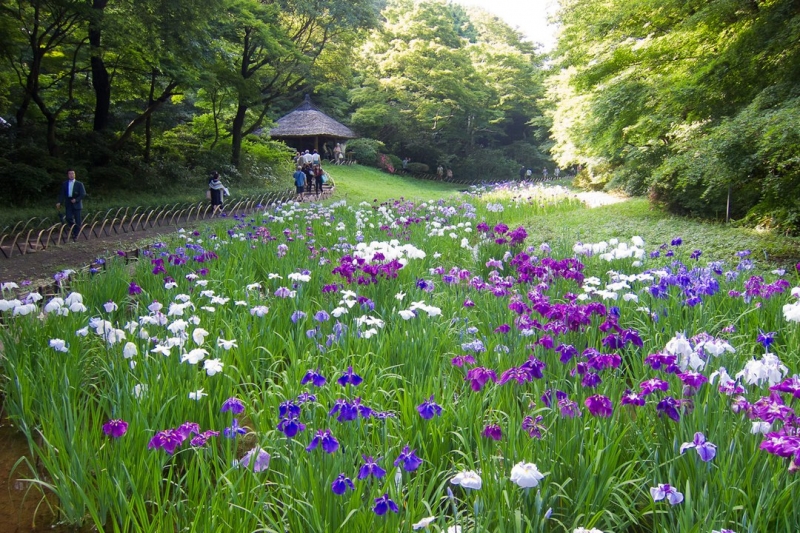
Image credit: Rs1421
The environment provides an ideal place to meditate as one passes through a torii gate (orange-and-black-coloured structures that mark the entrance and exit of a shrine). Upon reaching the main complex, visitors can participate in Shinto activities such as writing one’s wishes on a wood plate known as an ema or drawing fortune slips which are known as omikuji. The temple is also famous for its Inner Garden as well, which draws many people in during June when the delicate blue-purple irises are in bloom.
Admission: ¥500
Kyoto
3. Kinkakuji (Golden Pavilion) Temple
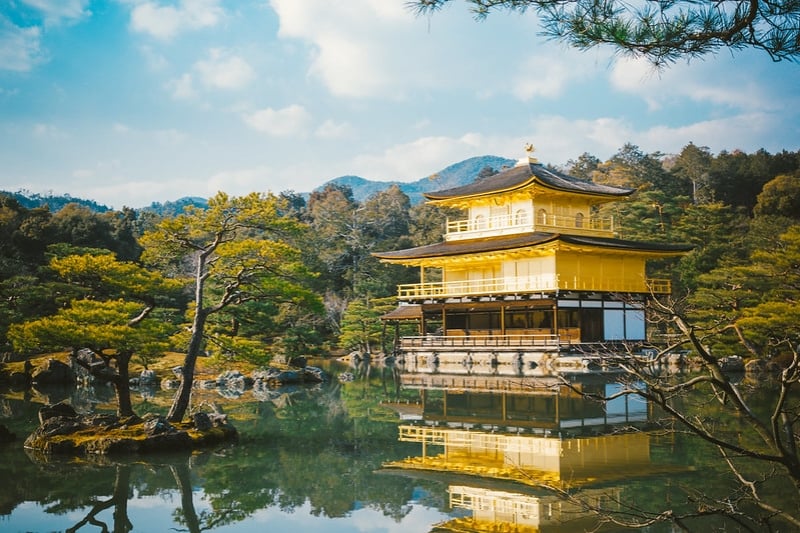
Image credit: hans-johnson
This spectacular temple gilded in gold leaf is simply a sight to behold among the temples and shrines in Japan. Kinkakuji overlooks a scenic pond with lush greenery surrounding it. On clear days, the temple casts a mirror image onto the surface of the water, creating a doubling image of the gold building. The reflection represents the duality of both man and nature that can coalesce into a single image, symbolising the belief in one’s closeness to nature in zen Buddhism.
Historically, the temple was once shogun Ashikaga Yoshimitsu’s retirement home. Unfortunately, it was burnt down twice during the Onin War and had to be rebuilt. It eventually became a zen temple, where there are many statues of the great Buddha and the Four Heavenly Kings. However, visitors cannot enter the actual pavilion and can only view it from across the pond.
Admission: ¥400
4. Kiyomizudera Temple (Pure Water Temple)
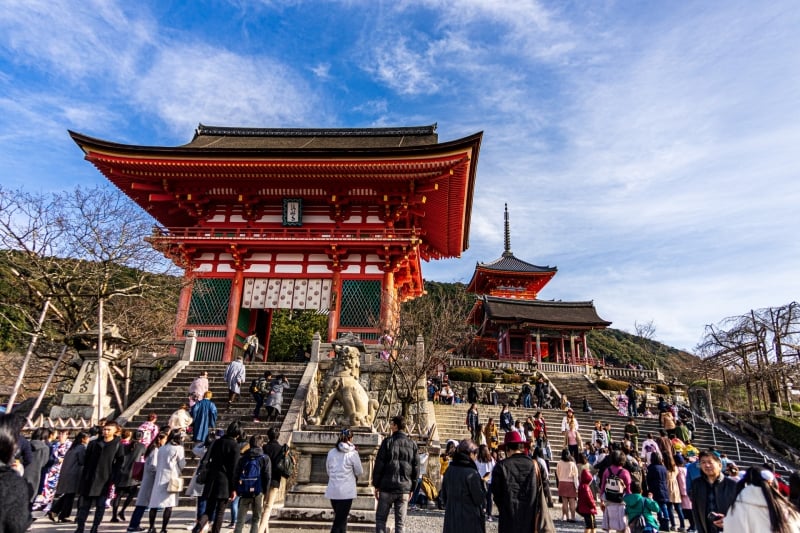
Image credit: Sung Shin
Among the temples and shrines of Japan, Kiyomizudera Temple is not only one of the oldest temples in Japan, but also a UNESCO World Heritage Site. It is home to a statue of the eleven-faced, thousand-armed Kannon or Goddess of Mercy where visitors can worship and ask for her blessings.
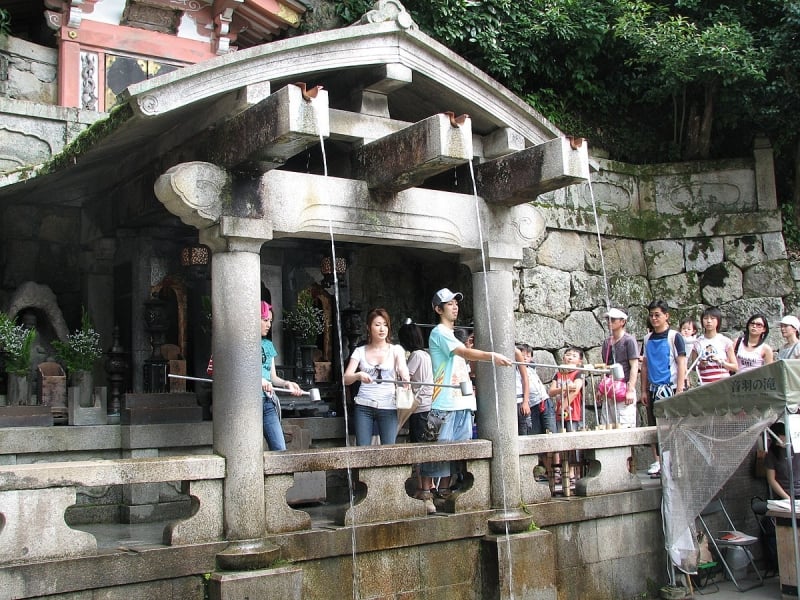
Image credit: Hu Totya
The Otowa Waterfall is located at the base of the temple’s hall, whereby visitors can drink from these streams from wooden cups attached to long poles to receive benefits of longevity, success at school and good love life. On a wooden platform extending out towards the city, viewers can also enjoy the surrounding view of cherry and maple trees that adorn and enhance the beauty of the temple, with its palettes of warm colours such as red and orange.
Admission: ¥400
Nara
5. Todaiji Temple (Great Eastern Temple)
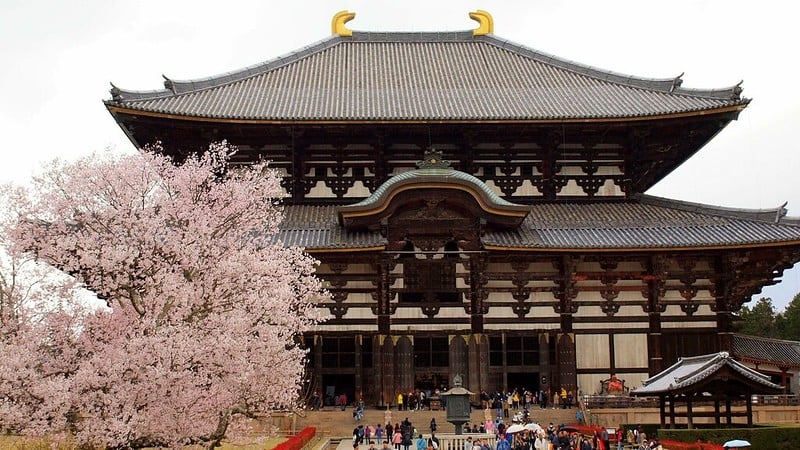
Image credit: coniferconifer
The biggest temple in Nara, Todaji Temple houses a large bronze statue of Buddha with the mudra of Abhaya in Buddhism, which means “Do not fear”, presenting the Buddha as a symbol of divine protection to all who enter the magnificent temple.
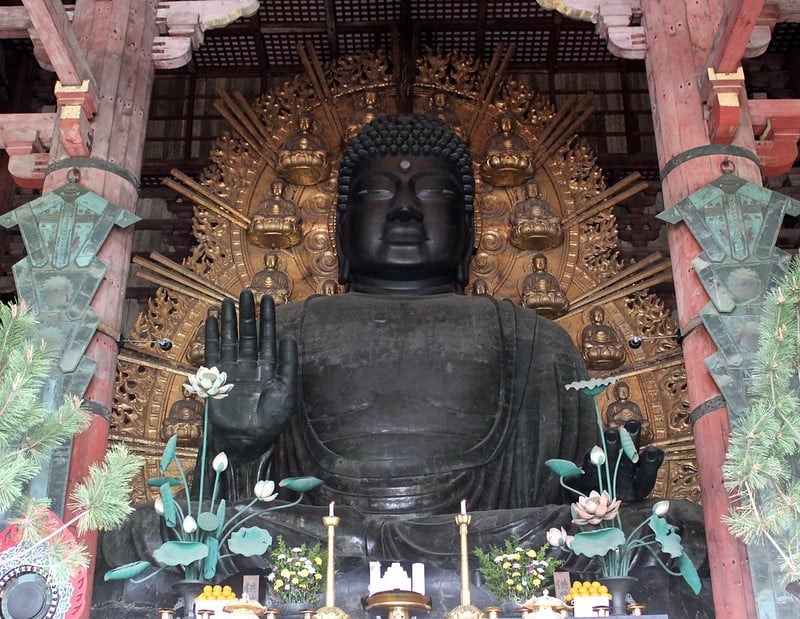
Image credit: Su–May
Other than visiting the temple to pay respects to the statue, visitors can try their hand at squeezing through a pillar with a hole at the base which is the same size as the Buddha’s nose. Those successful will supposedly achieve enlightenment in their next life. Additionally, deer from the nearby Nara Park also roam the outskirts of the temple, creating a scenic and enjoyable atmosphere for those who love animals.
Admission: ¥600
Mie
6. Meoto Iwa (Wedded Rocks)
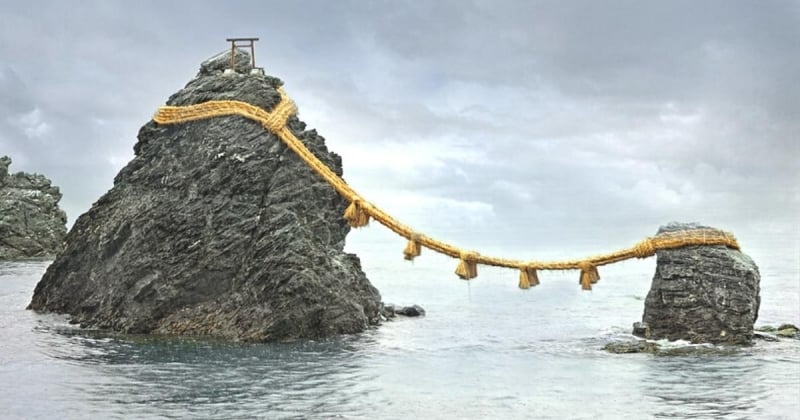
Image credit: Jean-Pierre Dalbéra
At first glance, Meoto Iwa does not seem like it would fit under the category of temples and shrines in Japan. However, these sacred rocks are actually a famous shrine in Japan. The two are tied with shimenawa rope (a straw rope marking the boundary to something sacred); the larger rock serves as the husband, while the smaller one is the wife.
These were once a torii gate for worshipping the Japanese Goddess of the Sun from ancient times. Today, women visit this shrine to pray for a suitable partner while married couples pray for a blissful marriage. It is customary for visitors to pray and cleanse themselves at this shrine before heading over to continue their pilgrimage at the Ise Shrines. We recommend visiting Meoto Iwa during high tide, when the rocks can be seen separated by water!
Admission: Free
7. Ise Shrines
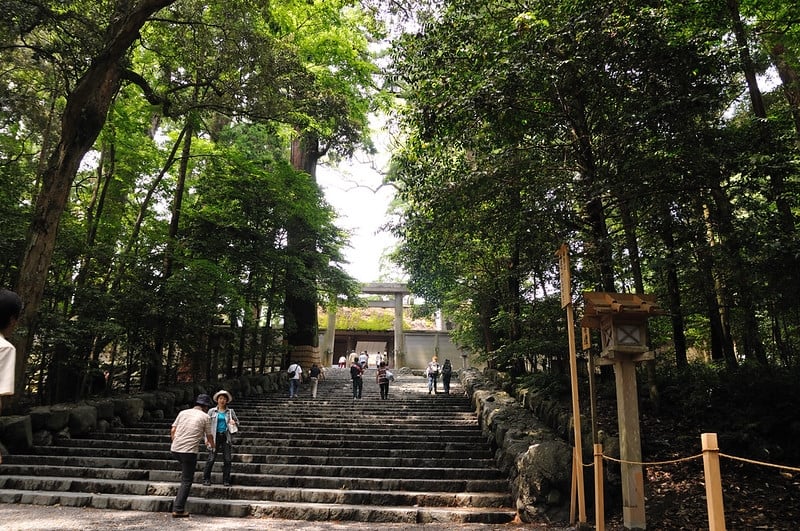
Image credit: ajari
Two shrines make up the whole of the Ise Shrines in the area of Ise Shima in Mie Prefecture. Both house prominent deities of Shinto Buddhism. Interestingly, the shrine buildings are made of solid cypress wood and use no nails but instead joined wood. According to an ancient Shinto tradition, they are rebuilt from scratch every 20 years. The next rebuilding will be in 2033.
Naiku (Inner Shrine)
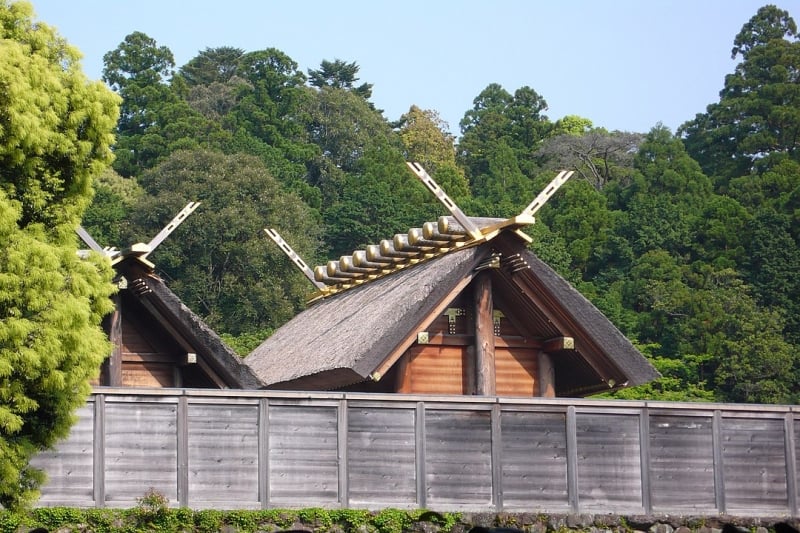
Image credit: N yotarou
Famously known as one of the most sacred Japanese shrines, Naiku (Inner Shrine) pays homage to Shinto’s most venerated deity, the Sun Goddess (Amaterasu Omikami). Visitors have to cross the Uji Bridge, a wooden bridge across the Isuzugawa River to get to the shrine.
The bridge comprises two torii gates and afterward, they will have to undergo a purification trough (which is used to clean hands and mouth), as well as another torii gate. It is recommended for visitors to cleanse themselves using the water of the Isuzugawa River as well. Lastly, they will enter Kaguraden, a building complex where amulets can be acquired for protection.
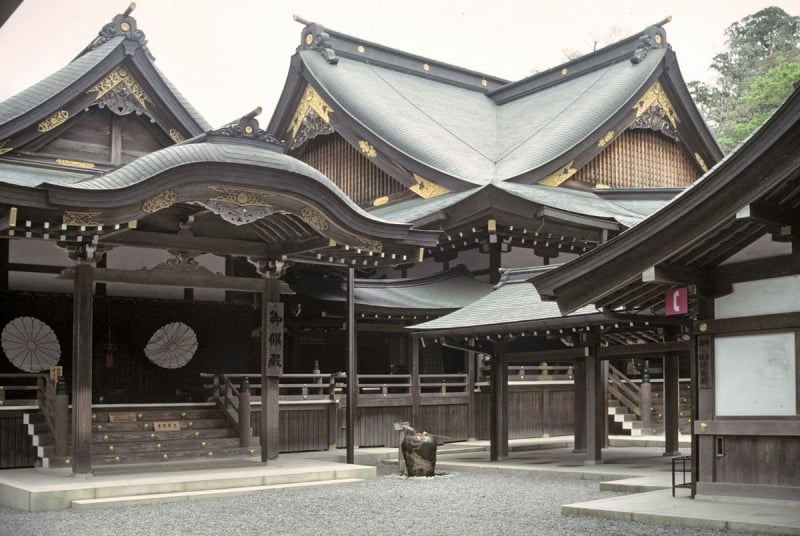
Image credit: Fg2
Visitors are only allowed to go beyond the outermost of the fence at the innermost part of the shrine and photography is prohibited. Only partially visible, the main hall features forked roof finishings (chigi) that are cut horizontally at their tips and have 10 decorative wooden beams (katsuogi), differing slightly from the Geku (Outer Shrine). Despite this, it is still recommended to visit if you would still want to experience the sanctity of this most famous shrine in Japan!
Geku (Outer Shrine)
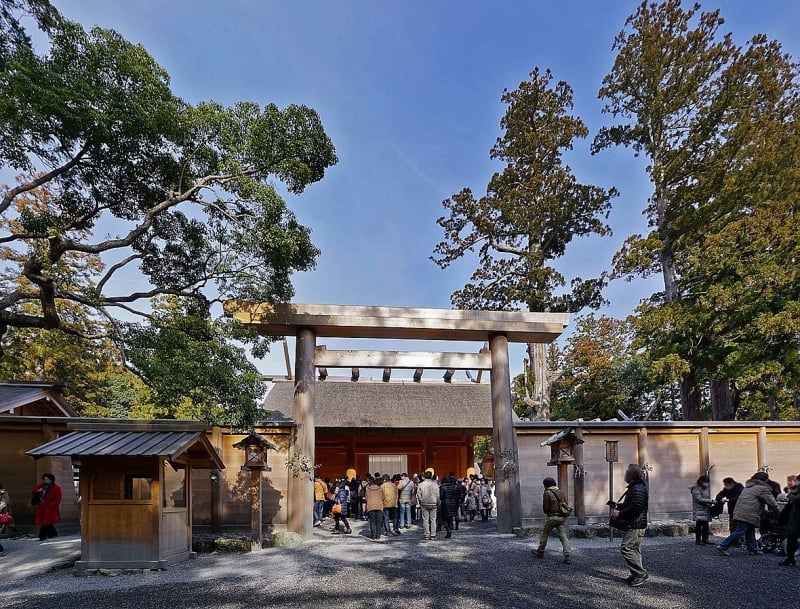
Image credit: z tanuki
On the other hand, the Outer Shrine enshrines Toyouke Omikami, the Shinto deity and guardian of food (agriculture and rice harvest), housing and clothing. It is believed that Toyouke feeds the Sun Goddess, Amaterasu Omikami. The main building in the Outer Shrine also features forked roof finishings (chigi) that are cut vertically at their tips and 9 decorative wooden beams (katsuogi) instead of 10. It is traditional for visitors to visit the Outer Shrine first before heading on to the Inner Shrine since the Outer Shrine is usually deemed less sacred compared to the Inner Shrine.
Admission: Free
Nikko
8. Toshogu Shrine
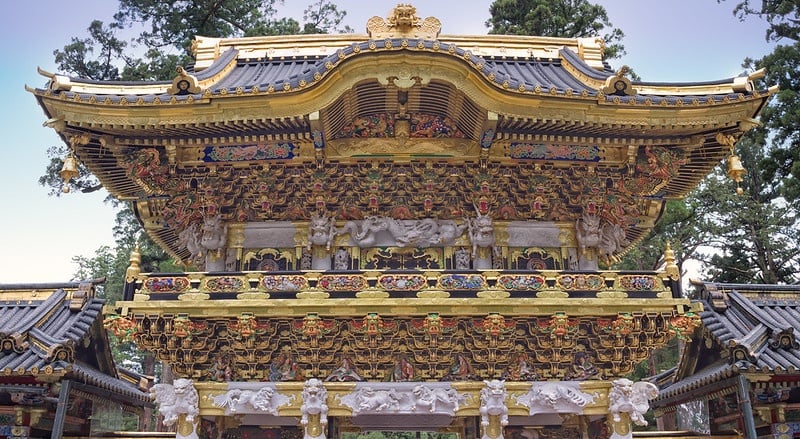
Image credit: . Ray in Manila
Out of all the temples and shrines in Japan, the most intricate one would be the Toshogu Shrine, which also functions as a memorial of the powerful ruler Tokugawa Ieyasu.
These particular buildings within the shrine are unusually lavish, with vibrant wood carvings and gold leaf, deferring from the traditionally simplistic and modest shrines. The wood carvings on the gates include: the symbol of the Three Wise Monkeys who “see no evil, hear no evil and speak no evil”; and the Nemuri-neko (Sleeping Cat), accompanied by a pair of sparrows and symbolises peace and harmony.
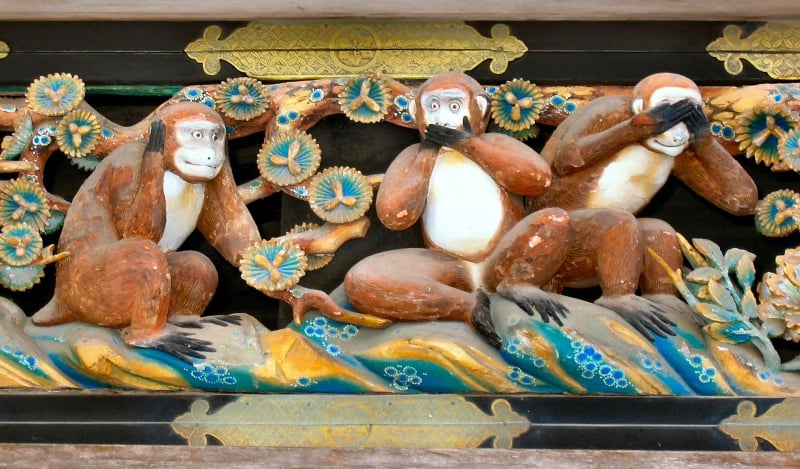
Image credit: MichaelMaggs
Fun fact: You will also spot a pair of odd greyish creatures named Sōzō-no-Zō (Imaginary Elephants). These are believed to have been painted by an artist who had never seen elephants in the flesh before.
Admission: ¥1300
Aomori
9. Bodaiji Temple at Osorezan (Mount Osore/Fear Mountain)
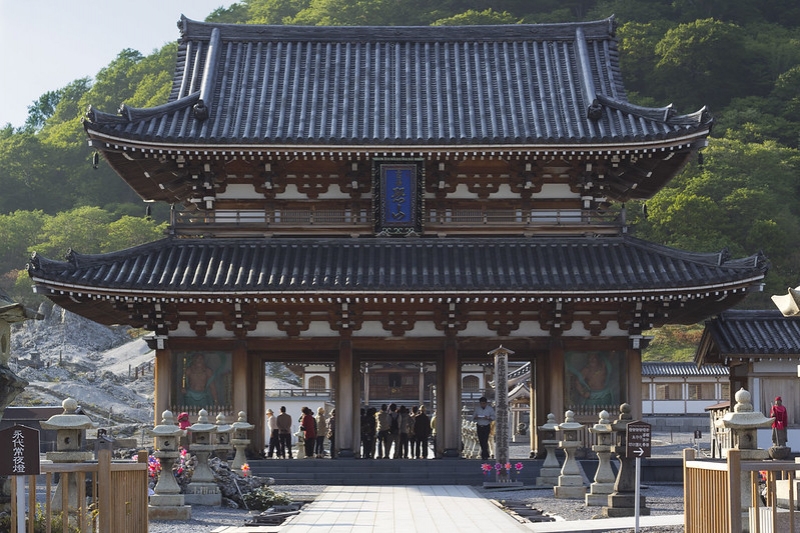
Image credit: Japanexperterna.se
Those who wish to visit more secluded temples should visit Bodaji Temple on Mount Osore, which is considered a popular Buddhist and folk religion pilgrimage site.
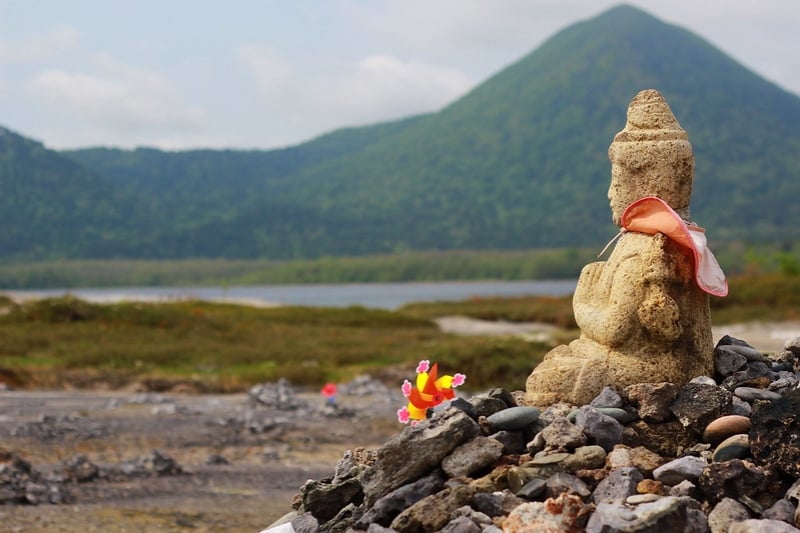
Image credit: Japanexperterna.se
The dream-like landscape and its seemingly complete isolation from the rest of Japan allow one to fully meditate. For believers, this area serves as the entrance to the afterlife because of its geographical elements that are similar to depictions in Buddhist teachings. These similarities include eight surrounding peaks and a river. The deity here is meant to bring salvation to the suffering, especially those who are grieving and hoping to communicate with their lost, unborn children.
Admission: ¥500
Wakayama
10. Okunoin Temple at Mount Koya
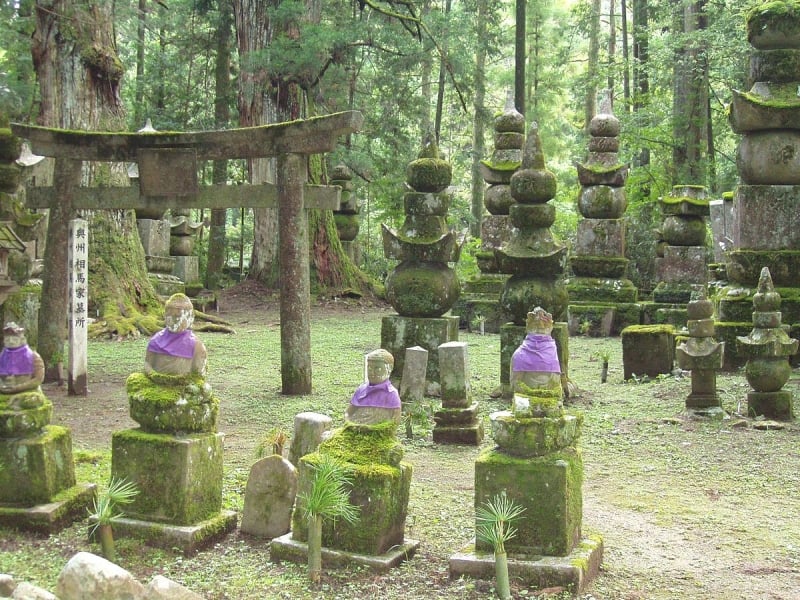
Image credit: Daderot
Last but not least, Okunoin Temple, located on Mount Koya in the region of Wakayama, is another must-visit Japanese temple that is unique; in the sense that the cemetery where monks were buried and the entire area from the torii gates count as the temple. This is especially popular among visitors who’d like to trek through natural pathways.
Besides that, it is also the final resting place of famous feudal lords. Despite it being a graveyard to many, the place is not disturbing or macabre. Instead, it is soothing and leaves one in awe at the mossy, elaborate tombstones, and statuettes sheltered in the comfort of the towering trees. At the end of the walk, one can visit jizo statues (earth-bearers and deities of travellers and children), which they make offerings and throw water at.

Image credit: BradBeattie
This area is extremely sacred and also houses the mausoleum of Kobo Daishi, a famous monk and the founder of Shingon Buddhism. Photography is prohibited in the mausoleum and visitors only have access to a meditation room and a hall of lanterns. Keep in mind that according to Japanese culture, it is necessary for one to bow before entering and to show respect in this area, particularly due to the esoteric nature of this temple.
Admission: Free
Also read: Traditional Towns & Villages in Japan That You Absolutely Have to Visit
And there you have it: 10 must-see temples and shrines in Japan that you will surely fall in love with! Whether it’s for seclusion, unique architecture, or a little bit of both — each visit to a Japanese shrine or temple offers an intimate peek into the spiritual life of the locals. And we’re sure you’ll enjoy every moment!





